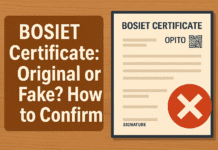
ISO 14001:2015 Environmental Management: A Comprehensive Guide
Introduction
ISO 14001:2015 Environmental Management : In today’s world, environmental concerns have taken center stage. Companies worldwide are increasingly recognizing the importance of sustainable practices and responsible environmental management. ISO 14001:2015 is a crucial standard that helps organizations effectively manage their environmental impact. In this comprehensive guide, we will delve into the details of ISO 14001:2015 Environmental Management, understanding its significance, implementation, and benefits.
What is ISO 14001:2015?
ISO 14001:2015 is an internationally recognized standard developed by the International Organization for Standardization (ISO). It sets out the criteria for an environmental management system (EMS) that organizations can use to enhance their environmental performance. This standard provides a framework for organizations to identify, prioritize, and manage environmental risks and opportunities in a systematic manner.
Understanding the ISO 14001:2015 Framework
1. Scope and Purpose
The ISO 14001:2015 standard defines the scope and purpose of an environmental management system. It clarifies the boundaries of what the system will cover and outlines the organization’s commitment to reducing its environmental impact.
2. Leadership and Commitment
Under this section, we explore the importance of leadership and commitment from top management in driving the environmental management system. The commitment of senior leaders is crucial for its successful implementation.
3. Environmental Policy
ISO 14001:2015 mandates the creation of an environmental policy, which should align with the organization’s strategic goals and demonstrate a commitment to environmental protection.
4. Planning
Planning is a critical phase where organizations identify environmental aspects, legal requirements, and objectives to integrate into their EMS.
5. Implementation and Operation
This section focuses on the execution of the EMS, including resource allocation, training, communication, and operational controls to achieve environmental objectives.
6. Monitoring and Measurement
ISO 14001:2015 emphasizes the importance of monitoring, measuring, and evaluating environmental performance to ensure continuous improvement.
7. Evaluation of Compliance
Organizations are required to assess their compliance with legal and regulatory requirements related to environmental aspects.
8. Improvement
This section explores the process of corrective and preventive actions, ensuring that organizations learn from incidents and continually enhance their environmental performance.
The Benefits of ISO 14001:2015 Implementation
Implementing ISO 14001:2015 Environmental Management offers several benefits to organizations:
– Enhanced Environmental Performance
By systematically identifying and addressing environmental issues, organizations can reduce their environmental impact, leading to improved sustainability.
– Legal Compliance
ISO 14001:2015 helps organizations stay compliant with environmental laws and regulations, reducing the risk of fines and legal complications.
– Cost Savings
Efficient resource usage and waste reduction result in cost savings for organizations.
– Improved Reputation
ISO 14001:2015 certification demonstrates an organization’s commitment to environmental responsibility, enhancing its reputation in the eyes of stakeholders and customers.
– Competitive Advantage
Certification can provide a competitive edge by attracting environmentally conscious clients and partners.
Conclusion
ISO 14001:2015 Environmental Management is a powerful tool for organizations looking to improve their environmental performance, ensure compliance, and gain a competitive advantage. By implementing this standard, companies can demonstrate their commitment to environmental responsibility while reaping numerous benefits.
ISO 9001:2015 Quality Management
OSHA Standards: A Guide to Health and Safety Compliance
A Comprehensive Guide to OSHA Standards
OSHA Requirements for Employers
Occupational Safety and Health Regulations in the USA
FAQs
- Is ISO 14001:2015 mandatory for all organizations? ISO 14001:2015 is not mandatory but is widely adopted by organizations seeking to enhance their environmental performance.
- How long does it take to become ISO 14001:2015 certified? The time required for certification varies depending on the organization’s size and complexity. It typically takes several months to a year.
- What is the cost of ISO 14001:2015 certification? The cost of certification varies based on factors such as organization size and location. It includes expenses related to audits, training, and documentation.
- Can ISO 14001:2015 certification be revoked? Yes, certification can be revoked if an organization fails to maintain compliance with the standard’s requirements.
- Is ISO 14001:2015 applicable to non-profit organizations? Yes, ISO 14001:2015 is applicable to all types of organizations, including non-profits, that wish to improve their environmental performance.
























